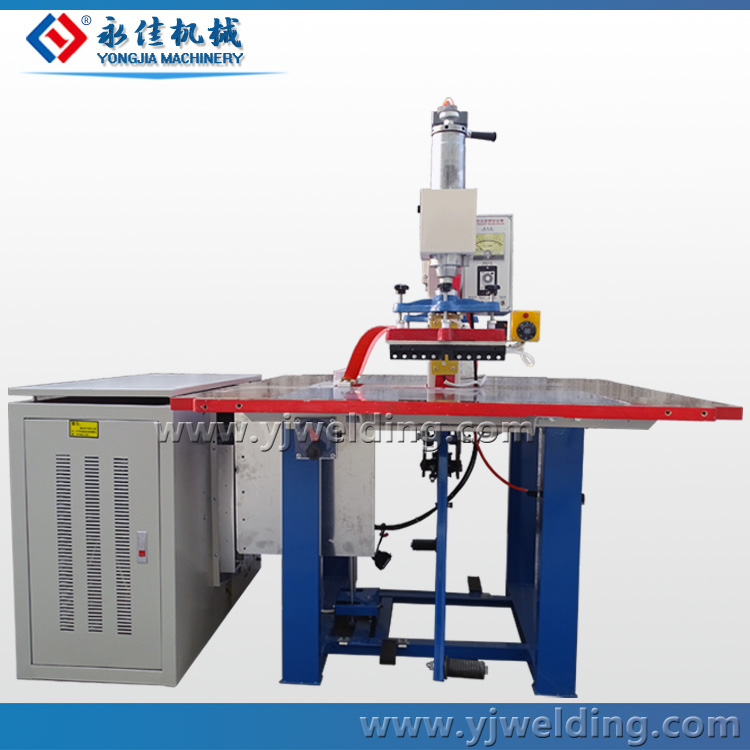High Frequency Plastic Welding Machine is Your Best Choice for Welding of PVC Products
Naturally, high-frequency welding (radio frequency) is not the only way to join together sheets of PVC and PU. So, why use HF rather than other techniques?
Comparisons Between HF Welding and other joining techniques
Below we have provided some comparisons between HF welding and a few alternative joining techniques.
1.Ultrasonic welding
Except High Frequency(Radio Frequency), ultrasonic welding maybe the most popular welding in plastic industry,and many customers are confusing about these two machines:which one is better? which one I should take? According to different working way, these two kinds machines are suitable for different material welding.HF welding is suitable for high melting point material: PVC ,PU, PET,APET,PETG,GAG etc. Ultrasonic welding is suitable for PE,PP.
2.Heating/Hot Air
The other two alternatives to HF (RF) welding are welding with hot air or hot wedge. These techniques involve heat being transferred to the material surfaces from the outside and are limited to thin sheets of material because the heat must be transported from the outer to the inner material surfaces in order to fuse them. If the material is too thick, it takes time and the outer material surfaces will be overheated before the inner ones have been heated sufficiently.
The HF technique overcomes this problem because the electrical field that generates the heat in an HF welding machine has the highest effect in the centre of the sheets being welded. This eliminates the risk of overheating and damage to surrounding material.
HF is also faster and produces a more durable and more uniform weld. HF welding does not discharge any gases and consumes less energy, which is better for the environment and of course saves money.
3.Gluing
Compared to gluing, HF welding (RF welding) saves a lot of time and produces a seam that is significantly stronger than a glued seam. Customers of ours in the advertising industry in the Middle East have switched to our machines for this very reason – burst seams caused glued billboards to fall down in strong winds, resulting in personal injury. HF welding also eliminates the use of adhesive, which contains solvents that could be harmful to production personnel and is not good for the environment.
4.Thread Sewing
Materials joined with a sewing machine are of course held together, but are neither air-tight nor waterproof, which are often mandatory requirements for products like tents or products that are designed to be filled with air or water. When a sewn joint is stressed, the load is put on the thread holding the joined material together. However, when an HF-welded (RF weld) seam is stressed, the load is absorbed by the material surfaces, which of course means that the HF-welded seam is stronger. Furthermore, the seam created with HF can be welded in a manner that provides a uniform transition without splices between the joined materials. There is no space through which dirt, moisture or bacteria can penetrate and impair the product’s strength and durability.
- Suitable materials for high-frequency welding
- Shipments for High Frequency Welding and Cutting Machine
- Shipments for Automatic Rotary High Frequency Blister Packaging Machine
- High Frequency Plastic Welding Machine is Your Best Choice for Welding of PVC Products
- What Is High Frequency Welding?
- The Application Scope of the Single Slide High Frequency Machine








